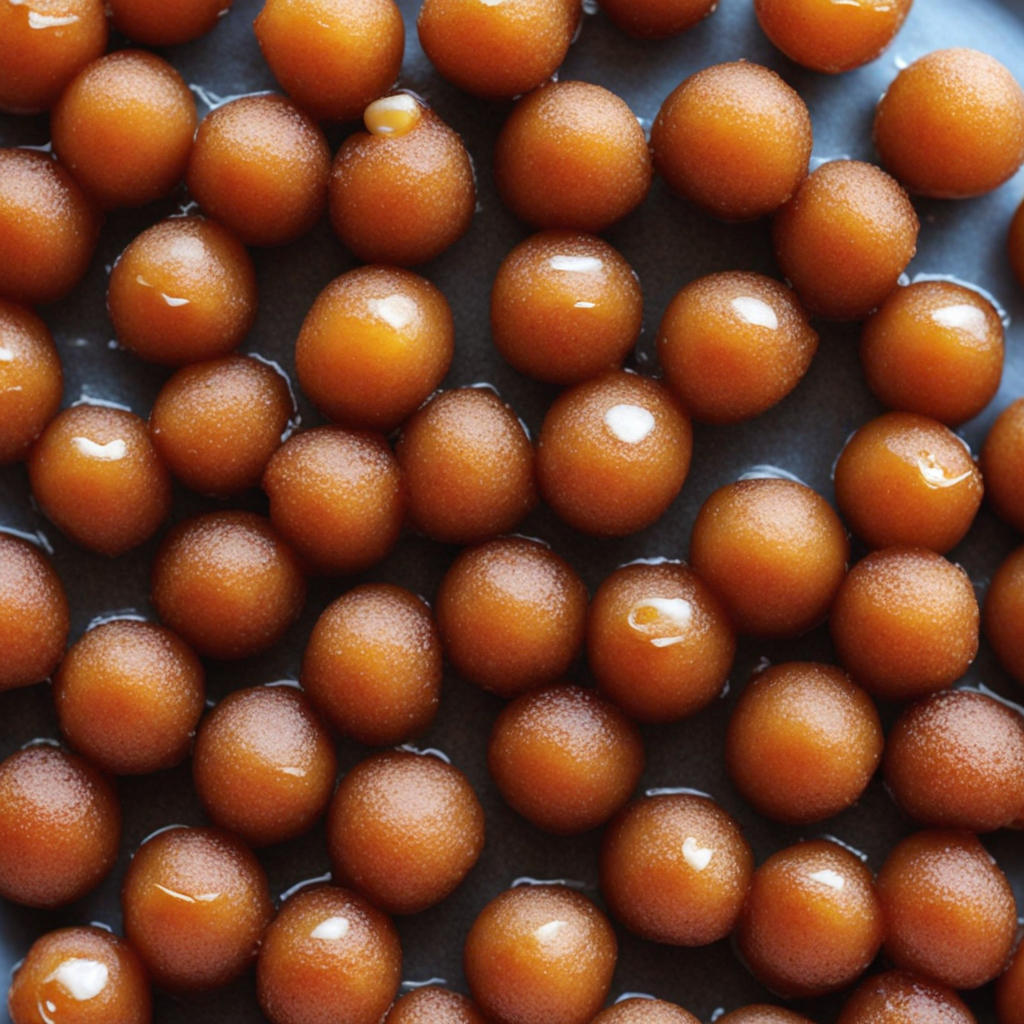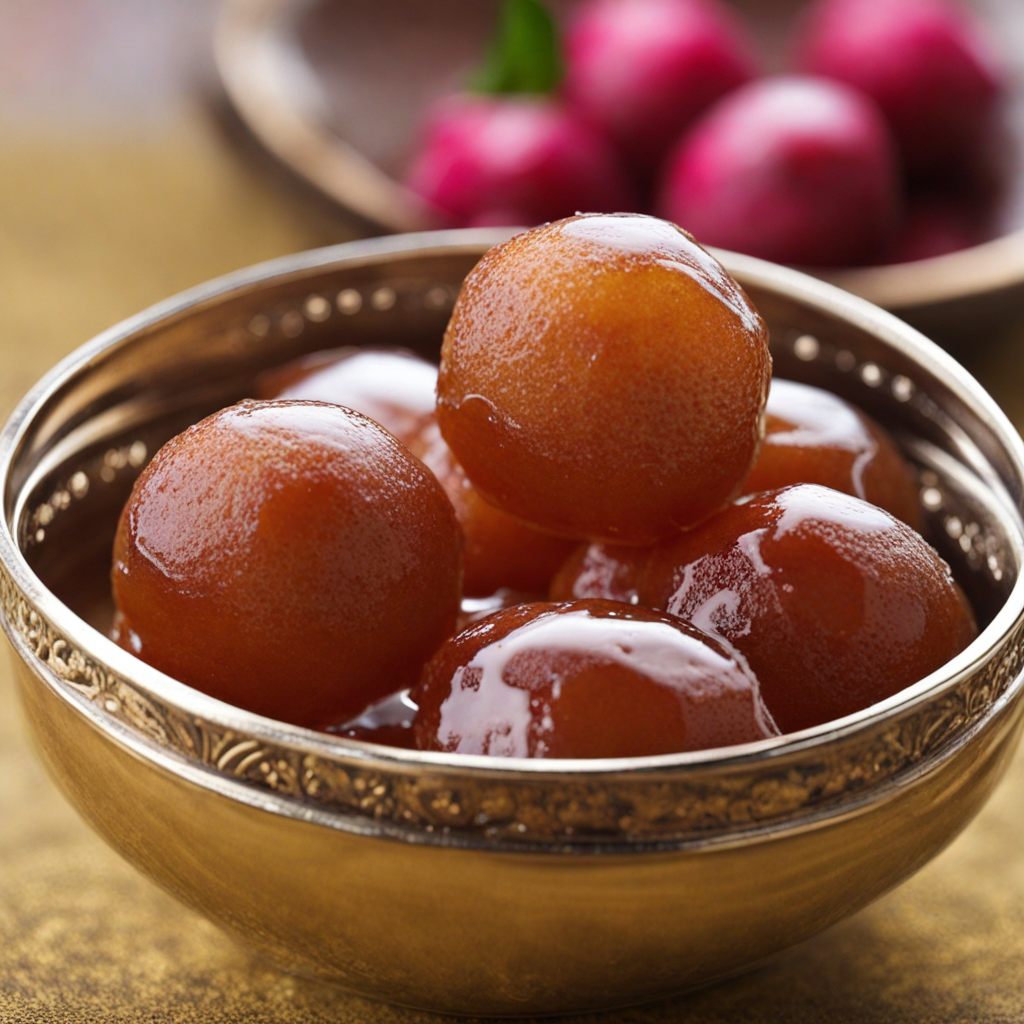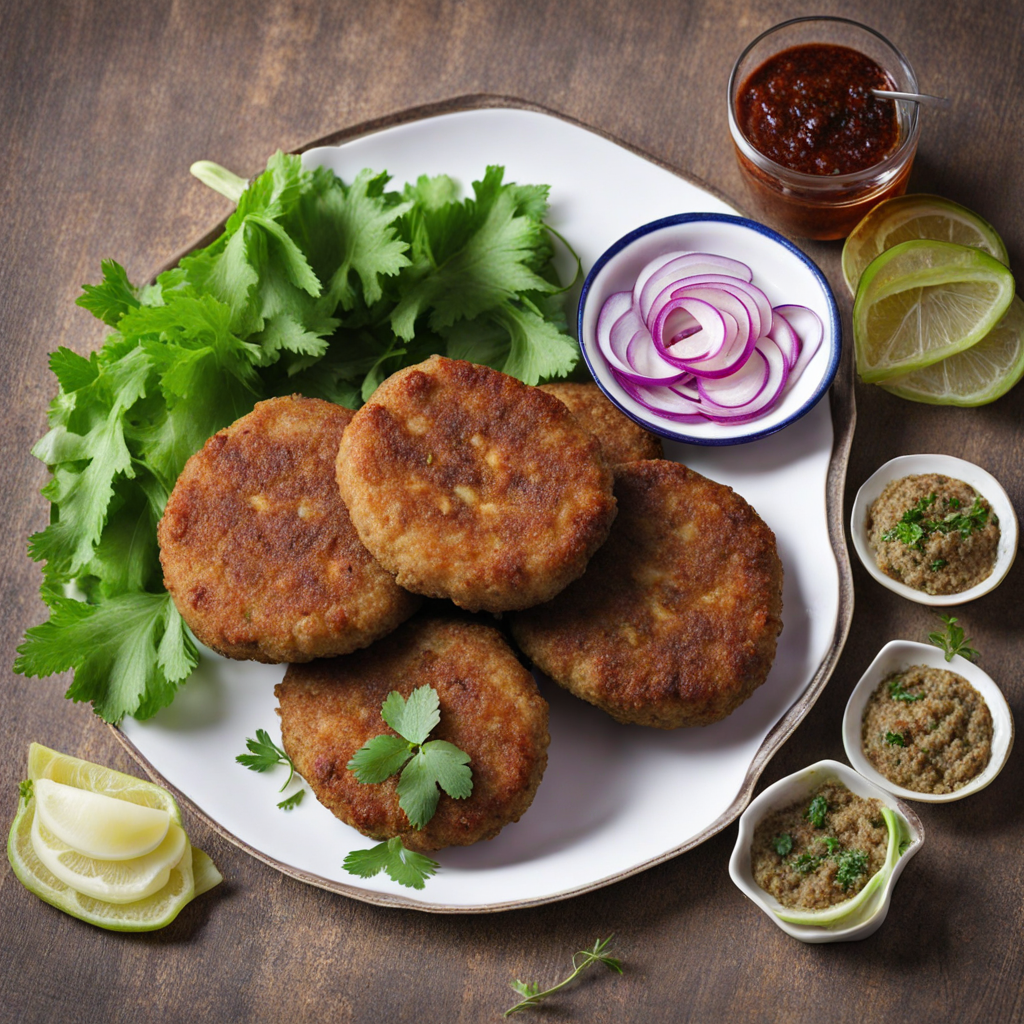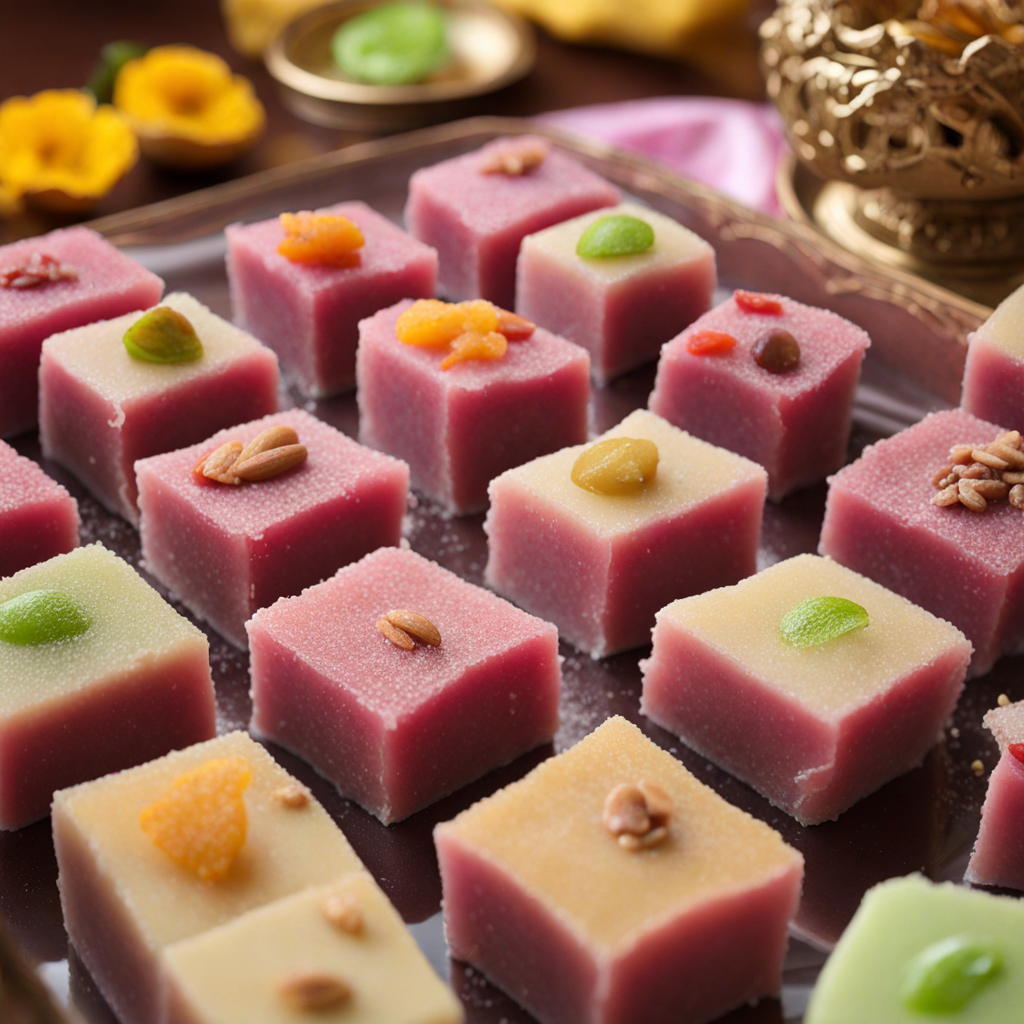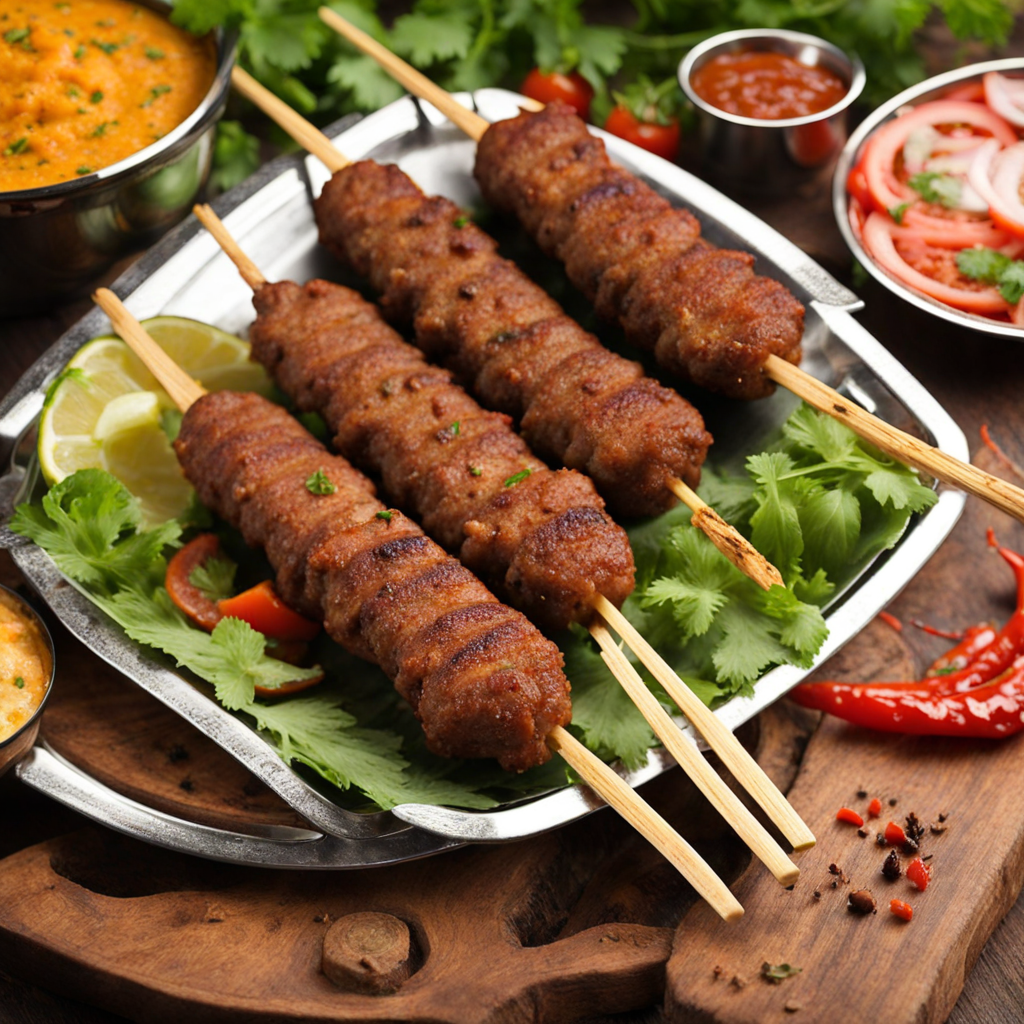Gulab Jamun
Gulab Jamun is a beloved dessert originating from the Indian subcontinent, particularly popular in Pakistan. These small, round sweets are made from khoya, which is evaporated milk solid, combined with a touch of flour and a hint of baking powder. Once the dough is formed, it is rolled into tiny balls and deep-fried until they achieve a golden-brown hue, creating a delicate, crisp exterior. The interior remains soft and slightly chewy, offering a delightful contrast to the outer layer. Once fried, the Gulab Jamun balls are soaked in a warm syrup made from sugar, water, and flavored with cardamom, rose water, or saffron. This syrup seeps into the fried dough, infusing it with sweetness and aromatic flavors. The dish's name translates to "rose berries," aptly reflecting its fragrant essence and the rosy hue of the syrup. The combination of the rich, syrupy sweetness and the soft, melt-in-your-mouth texture makes each bite a heavenly experience. Gulab Jamun is often served warm or at room temperature and is a staple at festive occasions and celebrations in Pakistan. Whether enjoyed during weddings, religious festivals, or family gatherings, this dessert evokes a sense of nostalgia and joy. The rich flavors, aromatic spices, and the sweetness of the syrup create a symphony of tastes that not only satisfies the sweet tooth but also invites you to indulge in a cherished cultural tradition.
How It Became This Dish
The Sweet Story of گلاب جامن (Gulab Jamun): A Culinary Delight from Pakistan #### Origins of Gulab Jamun Gulab Jamun, a beloved dessert in Pakistan and the Indian subcontinent, has a history as rich and layered as its flavors. The name "Gulab Jamun" is derived from two words: "Gulab," meaning rose, which refers to the rosewater-scented syrup that bathes these delectable sweets, and "Jamun," a reference to the dark purple fruit of the same name that resembles the shape and color of the dessert. The origins of Gulab Jamun can be traced back to the medieval period in the Indian subcontinent, specifically during the Mughal Empire, which spanned from the early 16th to the 19th century. While the exact genesis of Gulab Jamun is debated, many culinary historians believe that it was inspired by a similar dish called "Luquaimat," brought to India by Persian invaders. The original Luquaimat was a deep-fried dessert made from flour and sugar, which underwent incredible evolution in the Indian context, leading to the birth of Gulab Jamun. #### Cultural Significance Gulab Jamun occupies a prominent place in the culinary landscape of Pakistan and India, symbolizing celebration, hospitality, and joy. It is a staple dessert at weddings, festivals, and religious ceremonies. In Pakistan, where food is an integral part of social gatherings, Gulab Jamun serves as a sweet end to sumptuous meals, offering a delightful contrast to the savory dishes that precede it. The dessert is often associated with special occasions such as Eid, weddings, and birthdays. Families take great pride in making Gulab Jamun from scratch, with each household boasting its unique recipe passed down through generations. The act of preparing and sharing this dessert fosters a sense of community and togetherness, reinforcing familial bonds and cultural identity. Gulab Jamun also holds a significant place in the culinary exchanges between the Muslim and Hindu communities of the Indian subcontinent. While the dessert is enjoyed by people of all backgrounds, its preparation and consumption often transcend religious and cultural boundaries, showcasing the shared heritage of the region. #### Evolution Over Time As the centuries passed, Gulab Jamun evolved, adapting to regional tastes, ingredient availability, and culinary techniques. Originally made from khoya (reduced milk), the dessert's basic ingredients have expanded to include a variety of flours, such as all-purpose flour, semolina, and even instant mixes, catering to modern preferences and making preparation more accessible. In the early days, Gulab Jamun was primarily a rich, indulgent treat prepared for special occasions. However, as the dessert gained popularity, it found its way into everyday life. Street vendors and sweet shops began offering Gulab Jamun, making it a common sight at local markets and eateries. This shift democratized the dessert, allowing people from various socio-economic backgrounds to enjoy its sweet allure. In the late 20th and early 21st centuries, globalization and the migration of South Asian communities around the world led to the introduction of Gulab Jamun in various international contexts. Pakistanis and Indians living abroad brought their culinary traditions with them, making Gulab Jamun a favorite among diaspora communities. The dessert has since found a place in restaurants and catering services around the globe, often being served at celebratory events and gatherings. #### Culinary Techniques and Variations Traditionally, the preparation of Gulab Jamun involves mixing khoya with flour and kneading it into a soft dough, which is then shaped into small balls and deep-fried until golden brown. These golden orbs are then soaked in a fragrant syrup made of sugar, water, and cardamom, often enhanced with rosewater or saffron. Over time, various regional adaptations emerged, leading to unique variations of Gulab Jamun. For instance, in Karachi, local vendors might infuse the syrup with a hint of lemon for a zesty twist, while in Lahore, there may be a preference for a denser, more flavorful khoya. Some modern interpretations even experiment with flavors such as chocolate, mango, or pistachio, stretching the boundaries of tradition. Additionally, the advent of technology has led to the creation of instant Gulab Jamun mixes, allowing even novice cooks to whip up this dessert with relative ease. While some purists may argue that these instant mixes lack the authenticity of traditional recipes, they have undeniably made Gulab Jamun more accessible to a broader audience. #### The Role of Gulab Jamun in Modern Culture In contemporary Pakistan, Gulab Jamun continues to be a symbol of hospitality and festive spirit. Social media has played an influential role in its resurgence, with food bloggers and influencers sharing innovative recipes, creative presentations, and personal stories associated with the dessert. This has not only rekindled interest in traditional cooking but also inspired a new generation to appreciate and celebrate their culinary heritage. Moreover, local and international competitions featuring Gulab Jamun are becoming increasingly popular, showcasing the dessert's versatility and allowing chefs to demonstrate their skills and creativity. These events have sparked a revival of interest in traditional sweets and have encouraged culinary experimentation, further enriching the culinary tapestry of Pakistan. #### Conclusion Gulab Jamun is more than just a dessert; it is a cultural artifact that tells the story of a region's history, identities, and shared experiences. From its humble beginnings to its status as a global favorite, Gulab Jamun embodies the spirit of celebration, community, and the joy of sharing food. As it continues to evolve while retaining its core essence, Gulab Jamun will undoubtedly remain a cherished symbol of Pakistan’s rich culinary heritage for generations to come.
You may like
Discover local flavors from Pakistan


